 Pacheedaht First Nation asserts sovereignty, calls for blockaders to leave BC’s Walbran Valley. In related news: Elder Bill Jones takes his own Nation to court; and the Walbran echoes BC’s attempt to saw the Carmanah Valley in half. In Forestry/Wildfire news: New Brunswick says there’s no evidence timber practices worsen wildfires; the US Forest Service Chief defends logging in hearing; the US Interior plans to rescind the Public Lands Rule; Colorado says past wildfires are reshaping forest regeneration; Ontario invests in invasive species projects; and a study says Canadian wildfire smoke caused 82,000 premature deaths.
Pacheedaht First Nation asserts sovereignty, calls for blockaders to leave BC’s Walbran Valley. In related news: Elder Bill Jones takes his own Nation to court; and the Walbran echoes BC’s attempt to saw the Carmanah Valley in half. In Forestry/Wildfire news: New Brunswick says there’s no evidence timber practices worsen wildfires; the US Forest Service Chief defends logging in hearing; the US Interior plans to rescind the Public Lands Rule; Colorado says past wildfires are reshaping forest regeneration; Ontario invests in invasive species projects; and a study says Canadian wildfire smoke caused 82,000 premature deaths.
In Business & Finance: Newfoundland extends its power-purchase agreement with Corner Brook Pulp & Paper; Georgia-Pacific plans to modernize its Alabama River Cellulose mill; Georgia leaders explore options after mill closures; US residential building material prices rise for the 4th straight month; and Canada’s first mixed-use tall mass timber Passive House building rises in Vancouver. Meanwhile: Trump lobbies the EU for 100% tariffs on China and India; and lumber’s steep price drop chills Trump’s timber ambitions.
Finally, BC’s 14th Chief Forester Larry Pedersen reflects on lessons from his tenure.
Kelly McCloskey, Tree Frog News Editor


 WENDAKE, QC
WENDAKE, QC

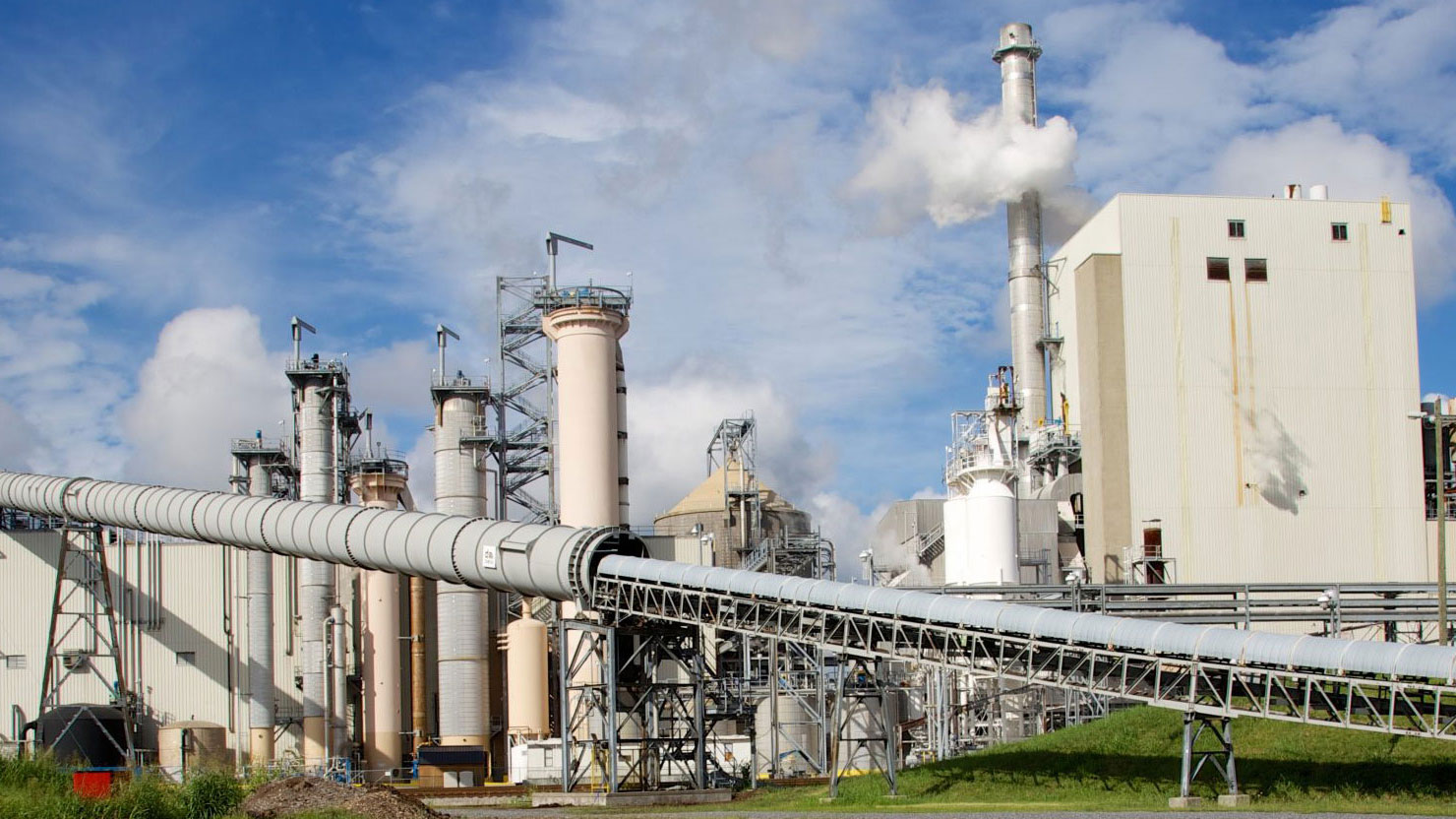
 LEBANON COUNTY, Pa. — A large fire at Weaber Lumber comes just over a month after the company filed for bankruptcy. Weaber, Inc. filed for Chapter 11 bankruptcy on Aug. 1, according to online records. The company also filed a WARN notice in July at its distribution center on 25 Keystone Drive. In that notice, the company said 145 people would be laid off from July 26 through Sept. 9 of this year. The fire broke out Monday night around 10 p.m. at the company’s headquarters at 1231 Mt. Wilson Road, and it took firefighters until Tuesday morning to bring the blaze under control over eight hours later.
LEBANON COUNTY, Pa. — A large fire at Weaber Lumber comes just over a month after the company filed for bankruptcy. Weaber, Inc. filed for Chapter 11 bankruptcy on Aug. 1, according to online records. The company also filed a WARN notice in July at its distribution center on 25 Keystone Drive. In that notice, the company said 145 people would be laid off from July 26 through Sept. 9 of this year. The fire broke out Monday night around 10 p.m. at the company’s headquarters at 1231 Mt. Wilson Road, and it took firefighters until Tuesday morning to bring the blaze under control over eight hours later. SOUTH ANNVILLE TOWNSHIP, Pa. — A three-alarm fire ripped through Weaber Lumber in Lebanon County. Crews responded to the fire in South Annville Township around 10 p.m. on Monday. Flames could be seen leaping from the burning building. The blaze was upgraded to the third alarm, prompting a large firefighter response. According to Lawn Fire Company Chief Dillon Wilson, approximately 1.1 million gallons of water have been used from the on-site hydrant system to combat the fire. Tankers also brought in additional water to the scene. Chief Wilson said most of the building was engulfed in flames when crews arrived. “It got ahead of us,” Wilson said. The chief believes this building might have the most combustible materials under one roof in the state. Weaber Lumber has experienced multiple fires over the years. …For 80 years, Weaber has been proudly committed to the lumber industry and is one of the nation’s leading hardwood manufacturers.
SOUTH ANNVILLE TOWNSHIP, Pa. — A three-alarm fire ripped through Weaber Lumber in Lebanon County. Crews responded to the fire in South Annville Township around 10 p.m. on Monday. Flames could be seen leaping from the burning building. The blaze was upgraded to the third alarm, prompting a large firefighter response. According to Lawn Fire Company Chief Dillon Wilson, approximately 1.1 million gallons of water have been used from the on-site hydrant system to combat the fire. Tankers also brought in additional water to the scene. Chief Wilson said most of the building was engulfed in flames when crews arrived. “It got ahead of us,” Wilson said. The chief believes this building might have the most combustible materials under one roof in the state. Weaber Lumber has experienced multiple fires over the years. …For 80 years, Weaber has been proudly committed to the lumber industry and is one of the nation’s leading hardwood manufacturers.




 In the September newsletter, you’ll find these stories and more:
In the September newsletter, you’ll find these stories and more:
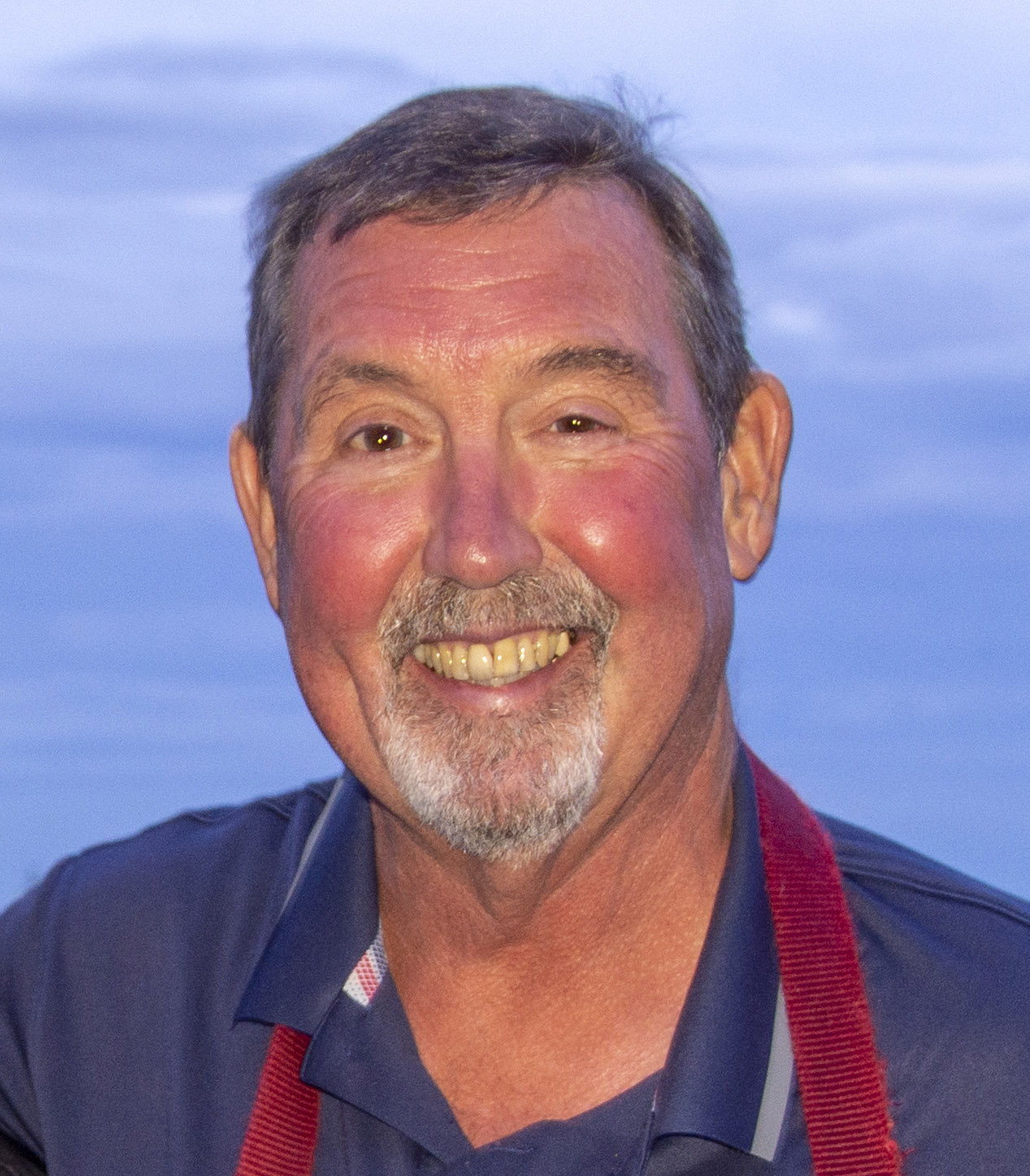
 Zoom Presentation, September 16th, 7:00 pm. The BC Forest History Association is honoured to host Larry Pedersen as the first speaker for the 2025 Speaker Series. Larry Pedersen was BC Provincial Chief Forester from 1994 to 2004. A graduate from UBC with a Bachelor of Science in Forestry in 1975, he became a registered Professional Forester in 1977. During his career, he advanced through a number of positions in the Forest Service and he also worked in the private sector. In his presentation titled Reflections from British Columbia’s 14th Chief Forester, Larry will discuss some important historical events that helped shape forestry in the province, explain how he ended up in the job, discuss some of the challenges that he faced, and will tell some stories about things that were said and done during his tenure. The presentation is intended to highlight just a few of the many important events that have shaped forestry in the province. To register for this Zoom presentation use this
Zoom Presentation, September 16th, 7:00 pm. The BC Forest History Association is honoured to host Larry Pedersen as the first speaker for the 2025 Speaker Series. Larry Pedersen was BC Provincial Chief Forester from 1994 to 2004. A graduate from UBC with a Bachelor of Science in Forestry in 1975, he became a registered Professional Forester in 1977. During his career, he advanced through a number of positions in the Forest Service and he also worked in the private sector. In his presentation titled Reflections from British Columbia’s 14th Chief Forester, Larry will discuss some important historical events that helped shape forestry in the province, explain how he ended up in the job, discuss some of the challenges that he faced, and will tell some stories about things that were said and done during his tenure. The presentation is intended to highlight just a few of the many important events that have shaped forestry in the province. To register for this Zoom presentation use this 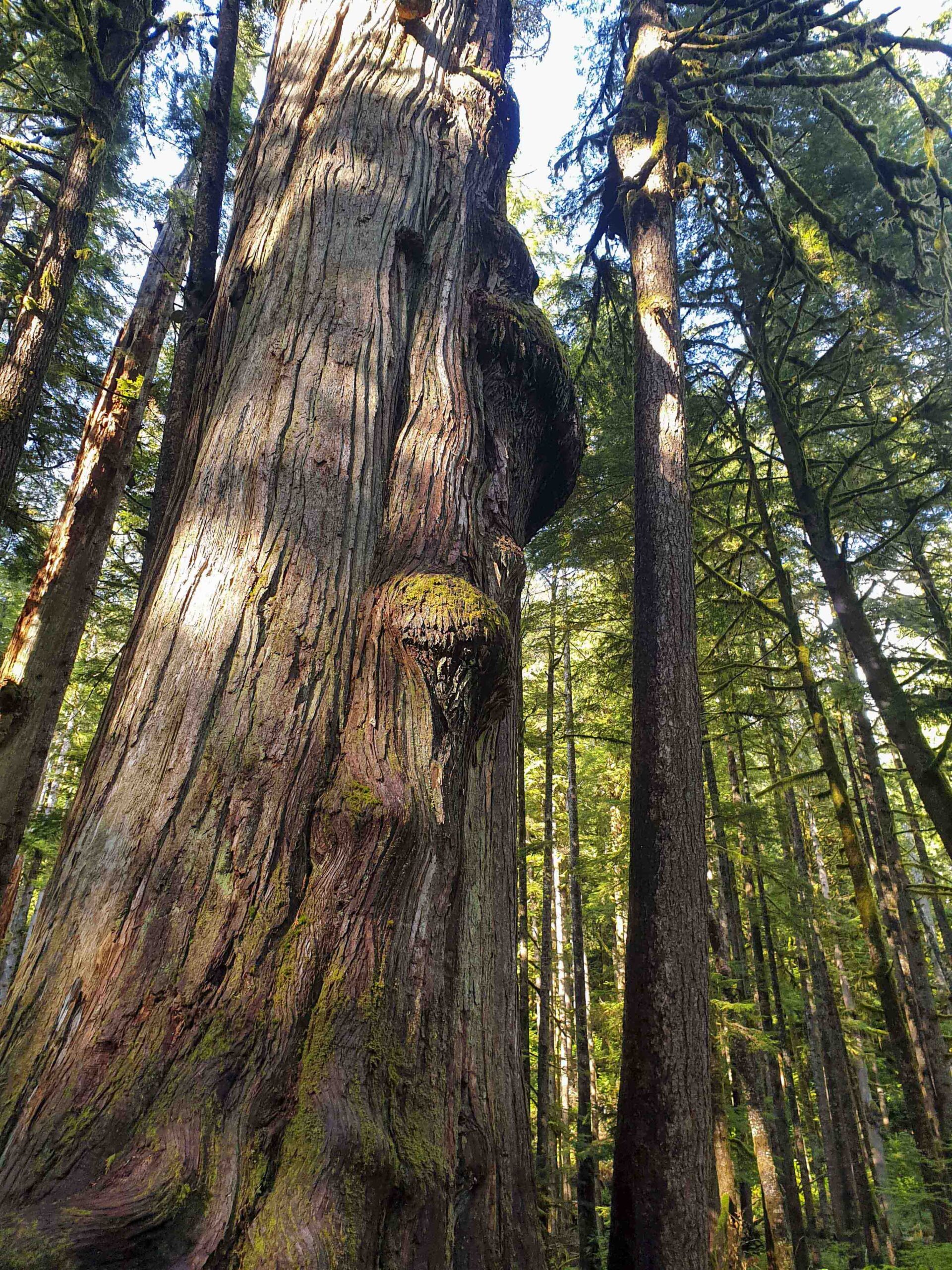 …Paul George, co-founder of the Western Canada Wilderness Committee …hit on popularizing the fight to protect old growth with a poster depicting a young woman gazing up the towering trunk of a massive, moss-covered Sitka spruce tree [in the] Carmanah Valley. The poster’s tag line — “Big Trees Not Big Stumps” — was a model of economy. …like five wasp stings to the hide of MacMillan Bloedel, the company that wanted to cut that tree and every other one like it down. Today we’d say it went viral. But not in the sense of a social media post that explodes with millions of views today only to be forgotten tomorrow … it would prove to have the lasting power of long COVID. …The poster came to mind [when a] small group of protesters planted themselves on a logging road leading into… the upper Walbran Valley, which borders the Carmanah on Vancouver Island’s southwest coast.
…Paul George, co-founder of the Western Canada Wilderness Committee …hit on popularizing the fight to protect old growth with a poster depicting a young woman gazing up the towering trunk of a massive, moss-covered Sitka spruce tree [in the] Carmanah Valley. The poster’s tag line — “Big Trees Not Big Stumps” — was a model of economy. …like five wasp stings to the hide of MacMillan Bloedel, the company that wanted to cut that tree and every other one like it down. Today we’d say it went viral. But not in the sense of a social media post that explodes with millions of views today only to be forgotten tomorrow … it would prove to have the lasting power of long COVID. …The poster came to mind [when a] small group of protesters planted themselves on a logging road leading into… the upper Walbran Valley, which borders the Carmanah on Vancouver Island’s southwest coast.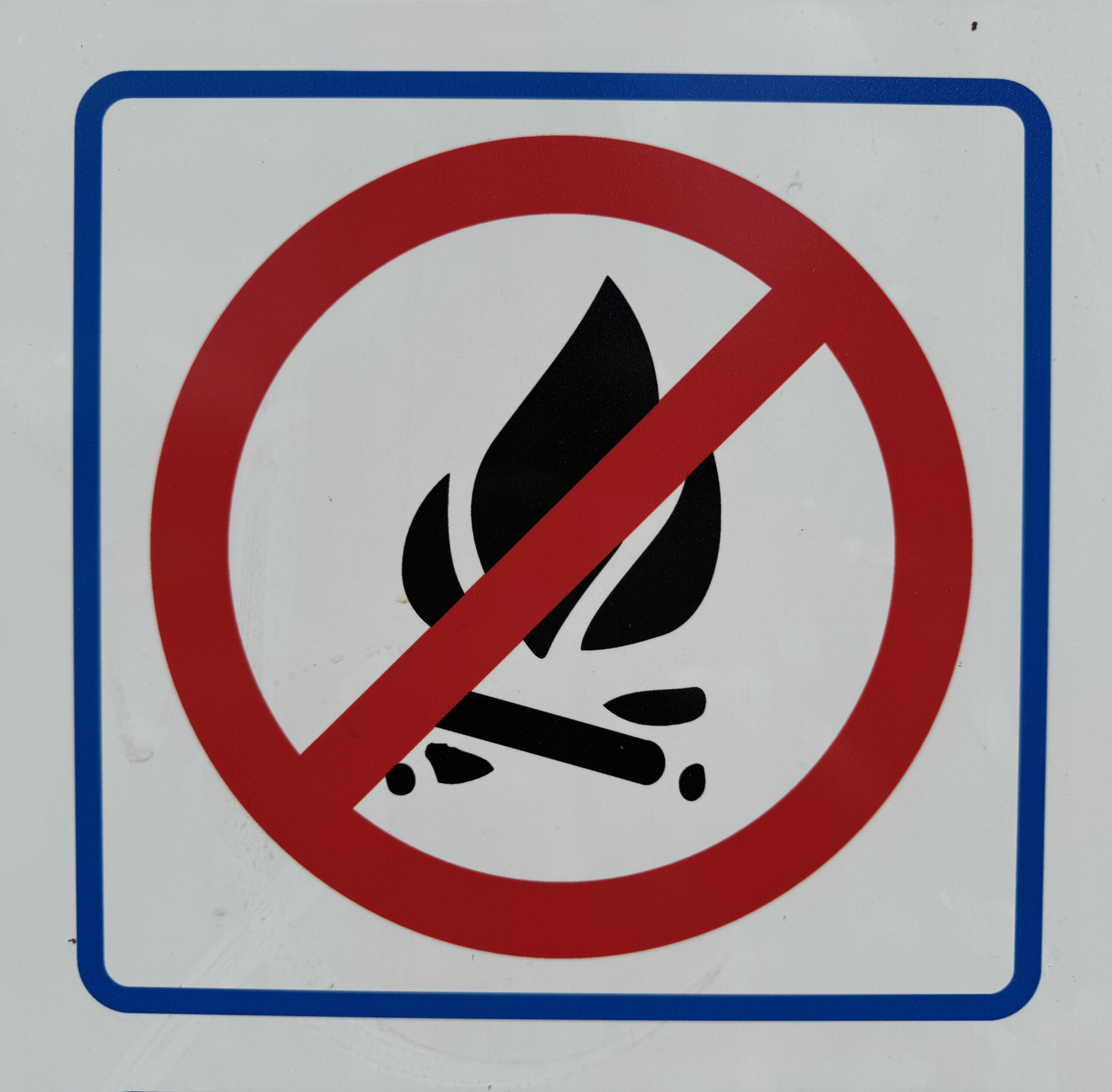 The existing Category 1 campfire prohibition for the Cariboo Fire Centre and Tsilhqot’in (Xeni Gwet’in) Declared Title area will be extended. It will go in effect at noon tomorrow (September 11) and will remain in effect until September 30 or until the order is rescinded. A Category 1 campfire is defined as any fire smaller than 0.5 metres high by 0.5 metres wide. The Cariboo Fire Centre said this prohibition applies to all areas in the Fire Centre that are outside of municipal boundaries. In addition, it also applies to these land types within municipal boundaries: Parks, conservancies and recreation areas; Recreation sites, recreation trails, interpretive forest sites and trail-based recreation areas; Ecological reserves; and Wildlife management areas and private managed forest land.
The existing Category 1 campfire prohibition for the Cariboo Fire Centre and Tsilhqot’in (Xeni Gwet’in) Declared Title area will be extended. It will go in effect at noon tomorrow (September 11) and will remain in effect until September 30 or until the order is rescinded. A Category 1 campfire is defined as any fire smaller than 0.5 metres high by 0.5 metres wide. The Cariboo Fire Centre said this prohibition applies to all areas in the Fire Centre that are outside of municipal boundaries. In addition, it also applies to these land types within municipal boundaries: Parks, conservancies and recreation areas; Recreation sites, recreation trails, interpretive forest sites and trail-based recreation areas; Ecological reserves; and Wildlife management areas and private managed forest land.


 A documentary addressing British Columbia’s escalating wildfire crisis and the urgent need for solutions is playing in Castlegar on Sept. 11. The film was produced by former Castlegar resident Murray Wilson. Wilson graduated from Selkirk College’s Forest Technology program in 1981 and then worked in Salmo and Nakusp before spending more than three decades in forestry across British Columbia. “My early forestry work in the Kootenays showed me the wildfire risks communities face and the solutions we need, which is at the heart of B.C. is Burning,” said Wilson.
A documentary addressing British Columbia’s escalating wildfire crisis and the urgent need for solutions is playing in Castlegar on Sept. 11. The film was produced by former Castlegar resident Murray Wilson. Wilson graduated from Selkirk College’s Forest Technology program in 1981 and then worked in Salmo and Nakusp before spending more than three decades in forestry across British Columbia. “My early forestry work in the Kootenays showed me the wildfire risks communities face and the solutions we need, which is at the heart of B.C. is Burning,” said Wilson. As severe drought conditions continue to affect river levels in the Thompson Okanagan region, fish-population protection orders will protect endangered chinook salmon in the Salmon River and Bessette Creek by temporarily restricting water use for forage crops and identified industrial purposes. The Salmon River and Bessette Creek have seen persistent low streamflows that are threatening the survival of spawning chinook populations. The fish-population protection orders will help restore water-flow levels and protect the salmon run. Effective Monday, Sept. 8, 2025, 490 surface-water and groundwater licences and transitioning groundwater users in the Salmon River and Bessette Creek watersheds within the assessed curtailment area are affected by the orders to stop using water for forage crops, which include grass for hay, alfalfa and forage corn. Irrigation of forage crops is one of the most water-intensive agricultural water uses.
As severe drought conditions continue to affect river levels in the Thompson Okanagan region, fish-population protection orders will protect endangered chinook salmon in the Salmon River and Bessette Creek by temporarily restricting water use for forage crops and identified industrial purposes. The Salmon River and Bessette Creek have seen persistent low streamflows that are threatening the survival of spawning chinook populations. The fish-population protection orders will help restore water-flow levels and protect the salmon run. Effective Monday, Sept. 8, 2025, 490 surface-water and groundwater licences and transitioning groundwater users in the Salmon River and Bessette Creek watersheds within the assessed curtailment area are affected by the orders to stop using water for forage crops, which include grass for hay, alfalfa and forage corn. Irrigation of forage crops is one of the most water-intensive agricultural water uses. 
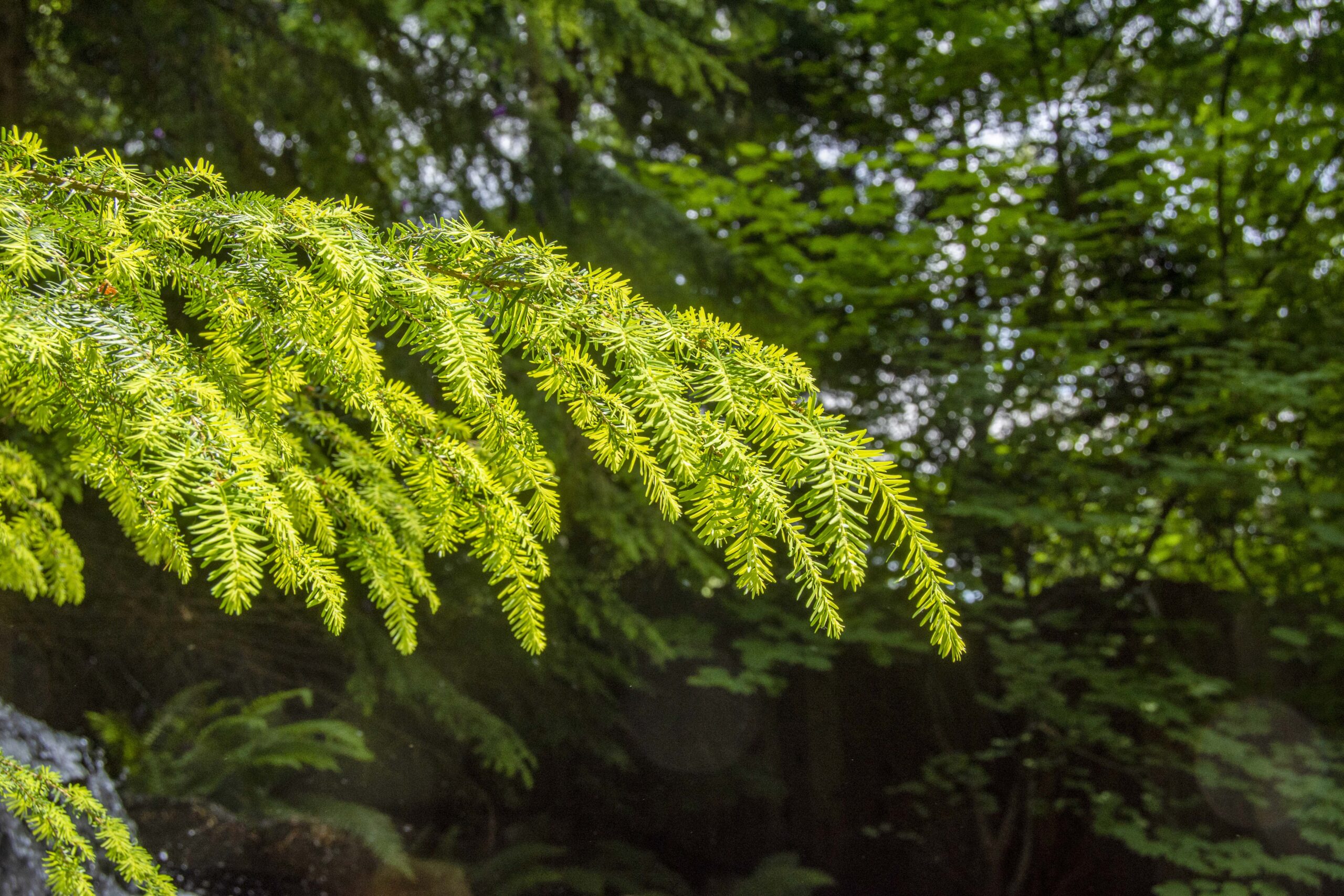 Five years after the release of the Old-Growth Strategic Review report, the BC NDP’s momentum towards a “new, holistic approach” to the management of old-growth forests has slowed almost to the point of regression. “Rather than the ‘paradigm shift’ we were promised, we’ve seen Premier Eby’s government doubling down on its prioritization of timber and industry profits over all other values,” said Eddie Petryshen, Wildsight Conservation Specialist. After its public release on September 11, 2020, the BC NDP government promised to enact all 14 recommendations made in the landmark Old-Growth Strategic Review (OGSR). The goal: to shift its focus towards ecosystem health, rather than timber. Since then, temporary logging deferrals have been put in place in high-risk old-growth stands in some parts of the province, and a 2023 Draft Biodiversity and Ecosystem Health Framework was released for public review.
Five years after the release of the Old-Growth Strategic Review report, the BC NDP’s momentum towards a “new, holistic approach” to the management of old-growth forests has slowed almost to the point of regression. “Rather than the ‘paradigm shift’ we were promised, we’ve seen Premier Eby’s government doubling down on its prioritization of timber and industry profits over all other values,” said Eddie Petryshen, Wildsight Conservation Specialist. After its public release on September 11, 2020, the BC NDP government promised to enact all 14 recommendations made in the landmark Old-Growth Strategic Review (OGSR). The goal: to shift its focus towards ecosystem health, rather than timber. Since then, temporary logging deferrals have been put in place in high-risk old-growth stands in some parts of the province, and a 2023 Draft Biodiversity and Ecosystem Health Framework was released for public review. 

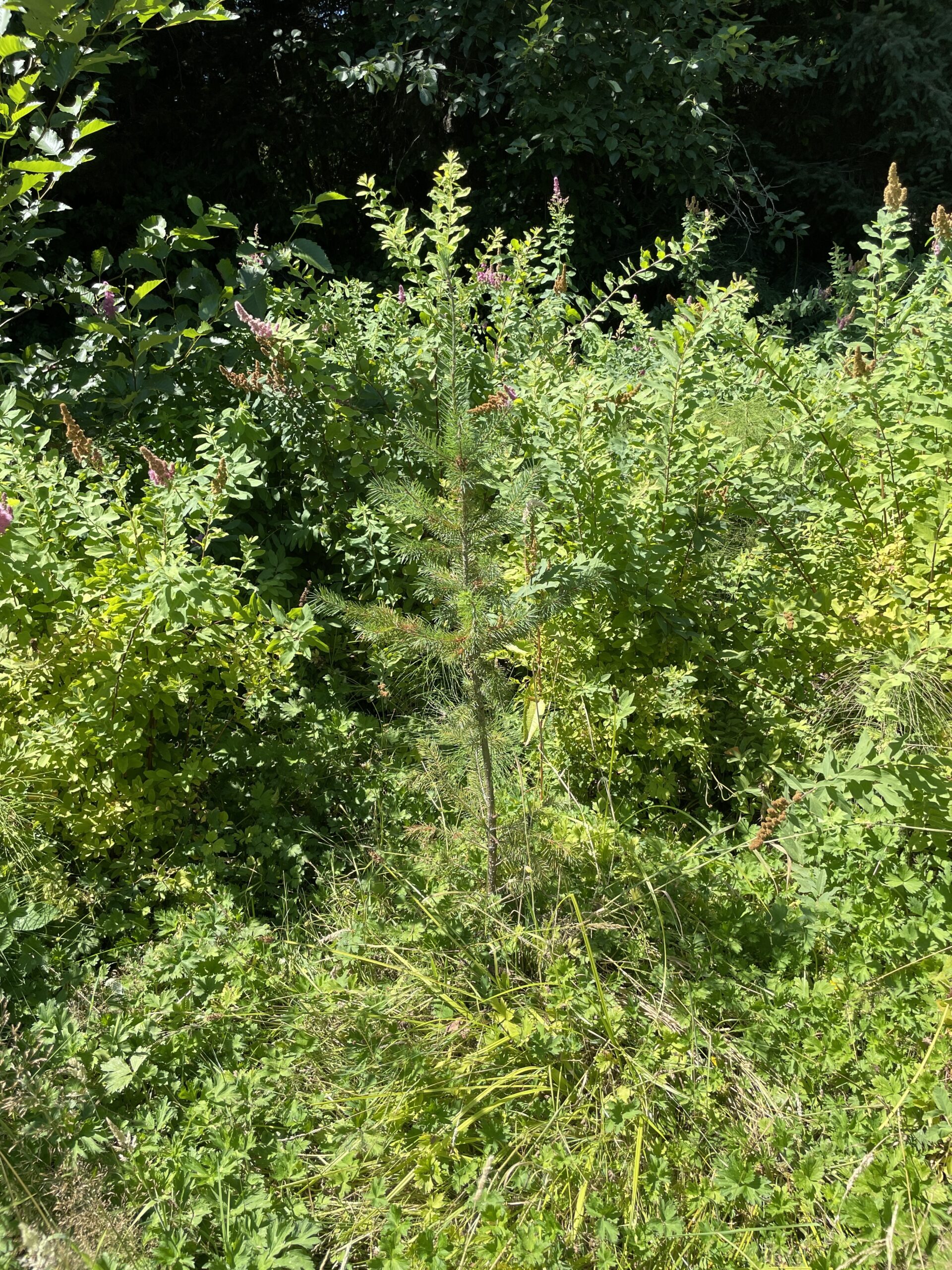 Amid calls from some First Nations and municipalities in northeastern Ontario to stop glyphosate spraying on Crown land, environmental groups are raising concerns over the herbicide’s effect on biodiversity. …Wildland fire ecologist Bob Gray said leafy deciduous trees, like aspen, are more resilient to wildfires than softwood conifers like pine and spruce. “Softwoods are highly resinous,” he said. “The foliage and bark is highly flammable. When you’ve got large contiguous areas of conifer forest, you can have large continuous forest fires.” If a timber company’s goal is to promote the growth of softwoods for harvest, at the expense of hardwoods, it can make that area more prone to wildfires. …Jocelyne Laflamme is a Ph.D. candidate at the University of British Columbia found that aspen becomes more flammable in the fall, when they lose their leaves. …In August, forest company Interfor cancelled plans to spray herbicides on trees along the north shore of Lake Huron.
Amid calls from some First Nations and municipalities in northeastern Ontario to stop glyphosate spraying on Crown land, environmental groups are raising concerns over the herbicide’s effect on biodiversity. …Wildland fire ecologist Bob Gray said leafy deciduous trees, like aspen, are more resilient to wildfires than softwood conifers like pine and spruce. “Softwoods are highly resinous,” he said. “The foliage and bark is highly flammable. When you’ve got large contiguous areas of conifer forest, you can have large continuous forest fires.” If a timber company’s goal is to promote the growth of softwoods for harvest, at the expense of hardwoods, it can make that area more prone to wildfires. …Jocelyne Laflamme is a Ph.D. candidate at the University of British Columbia found that aspen becomes more flammable in the fall, when they lose their leaves. …In August, forest company Interfor cancelled plans to spray herbicides on trees along the north shore of Lake Huron.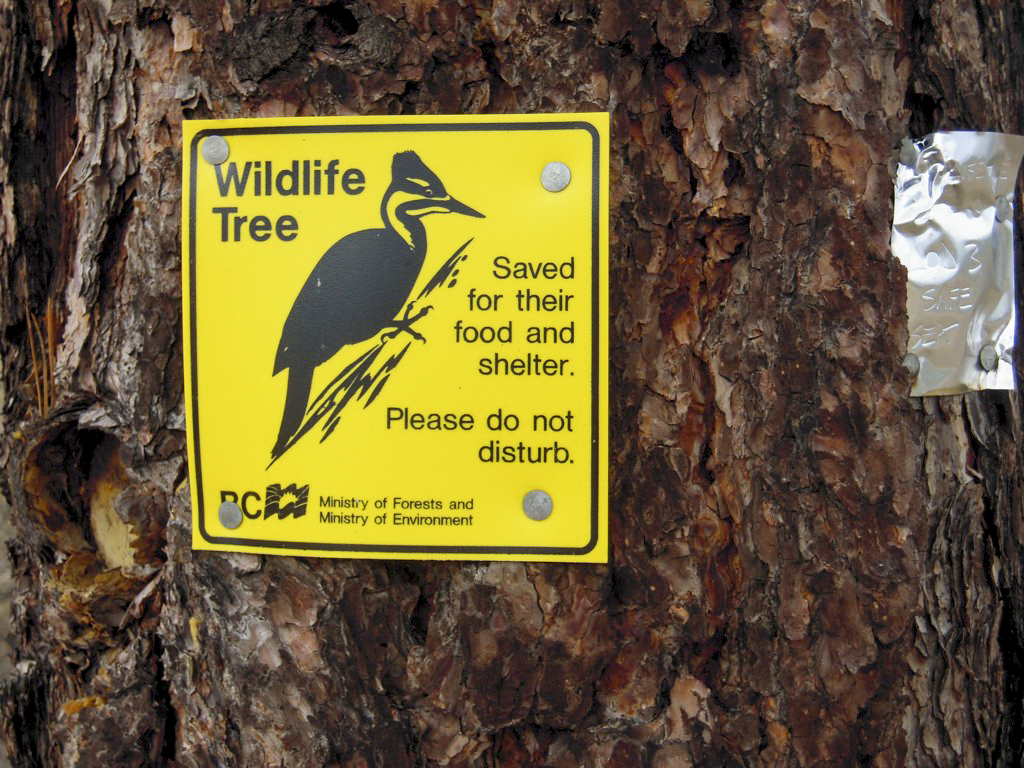 As wildfires tear through New Brunswick’s forests at record rates this year, researchers say the resulting damage is reshaping bird habitats — displacing some species while creating new opportunities for others. “With every disturbance in a forest, you have winners and losers,” says Joe Nocera, a forestry and environmental management professor at the University of New Brunswick. In this case, the winners will be woodpeckers. Wildfires, while destructive, are a natural part of forest ecosystems, said Amy-Lee Kouwenberg, an associate director at Birds Canada explained. They clear out underbrush and create habitats that support a wider range of species, boosting biodiversity in the long run. Woodpeckers thrive in burned areas, and the resulting tree cavities they leave behind are used as nesting sites that other birds rely on. …Species like the Canada warbler, wood thrush and Bicknell’s thrush — all of which depend on dense, mature or shrubby forests — are particularly vulnerable .
As wildfires tear through New Brunswick’s forests at record rates this year, researchers say the resulting damage is reshaping bird habitats — displacing some species while creating new opportunities for others. “With every disturbance in a forest, you have winners and losers,” says Joe Nocera, a forestry and environmental management professor at the University of New Brunswick. In this case, the winners will be woodpeckers. Wildfires, while destructive, are a natural part of forest ecosystems, said Amy-Lee Kouwenberg, an associate director at Birds Canada explained. They clear out underbrush and create habitats that support a wider range of species, boosting biodiversity in the long run. Woodpeckers thrive in burned areas, and the resulting tree cavities they leave behind are used as nesting sites that other birds rely on. …Species like the Canada warbler, wood thrush and Bicknell’s thrush — all of which depend on dense, mature or shrubby forests — are particularly vulnerable . 



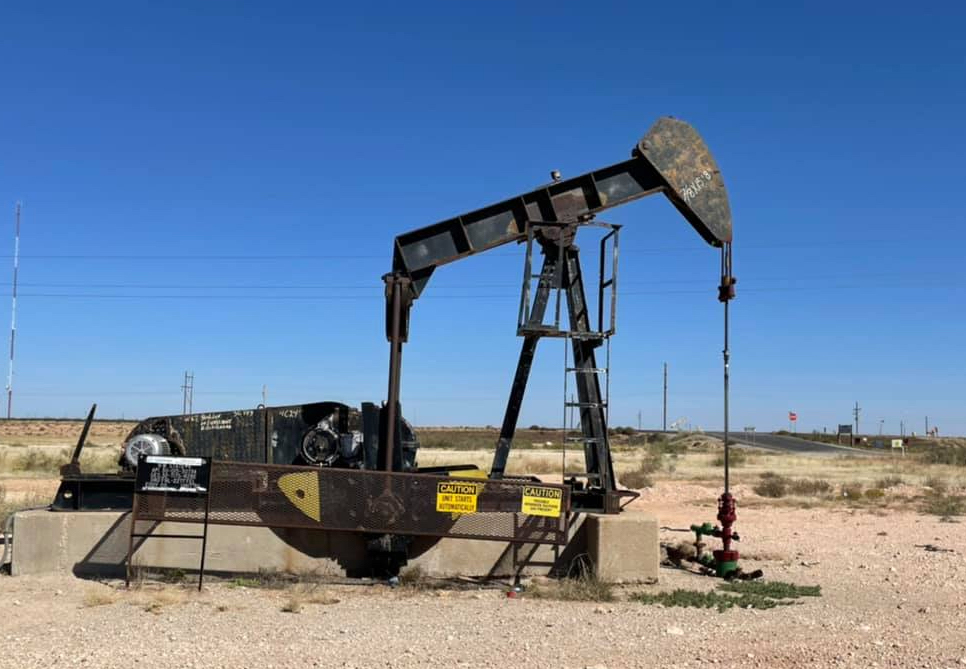 Planet-warming emissions from a group of the world’s largest fossil fuel producers have significantly ramped up the intensity of heat waves, a new study suggests, one of the first peer-reviewed papers to link dozens of climate-fuelled weather events to specific companies. The study led by a group of Swiss-based climate scientists says about one-quarter of the 213 recent heat waves they studied, including the 2021 B.C. heat dome, would have been virtually impossible without human-caused climate change. It says emissions from some individual companies, including relatively smaller ones and some of Canada’s oil-and-gas producers, would have been enough to make otherwise impossible heat waves statistically possible. …The researchers linked emissions from the group of cement and fossil-fuel producers to about half the increase in heat wave intensity connected to human-caused climate change.
Planet-warming emissions from a group of the world’s largest fossil fuel producers have significantly ramped up the intensity of heat waves, a new study suggests, one of the first peer-reviewed papers to link dozens of climate-fuelled weather events to specific companies. The study led by a group of Swiss-based climate scientists says about one-quarter of the 213 recent heat waves they studied, including the 2021 B.C. heat dome, would have been virtually impossible without human-caused climate change. It says emissions from some individual companies, including relatively smaller ones and some of Canada’s oil-and-gas producers, would have been enough to make otherwise impossible heat waves statistically possible. …The researchers linked emissions from the group of cement and fossil-fuel producers to about half the increase in heat wave intensity connected to human-caused climate change. WorkSafeBC will be holding a virtual public hearing on
WorkSafeBC will be holding a virtual public hearing on  The local service district of Lethbridge, N.L., is partially evacuated after a wildfire started in a bark pile and its adjacent forest outside Sexton Lumber late Sunday afternoon. The evacuation zone includes the areas of Oldford’s Hill to Southwest Bridge and Bayside Drive and Forest Drive, where the saw mill is located. Anthony Paddon Elementary in Musgravetown has been converted into a reception centre for impacted residents. In a social media post, the school announced that it will be closed to students on Monday, as it supports the efforts of emergency responders. The elementary school in Lethbridge, Hertiage Collegiate, is closed as well. In a social media post the school says more updates will be provided at 10:30 a.m. N.T. Route 233 remains impassible in both directions to all traffic. As of Sunday, three water bombers and ground crews were working the fire, and crews remained on the scene overnight to monitor conditions.
The local service district of Lethbridge, N.L., is partially evacuated after a wildfire started in a bark pile and its adjacent forest outside Sexton Lumber late Sunday afternoon. The evacuation zone includes the areas of Oldford’s Hill to Southwest Bridge and Bayside Drive and Forest Drive, where the saw mill is located. Anthony Paddon Elementary in Musgravetown has been converted into a reception centre for impacted residents. In a social media post, the school announced that it will be closed to students on Monday, as it supports the efforts of emergency responders. The elementary school in Lethbridge, Hertiage Collegiate, is closed as well. In a social media post the school says more updates will be provided at 10:30 a.m. N.T. Route 233 remains impassible in both directions to all traffic. As of Sunday, three water bombers and ground crews were working the fire, and crews remained on the scene overnight to monitor conditions.